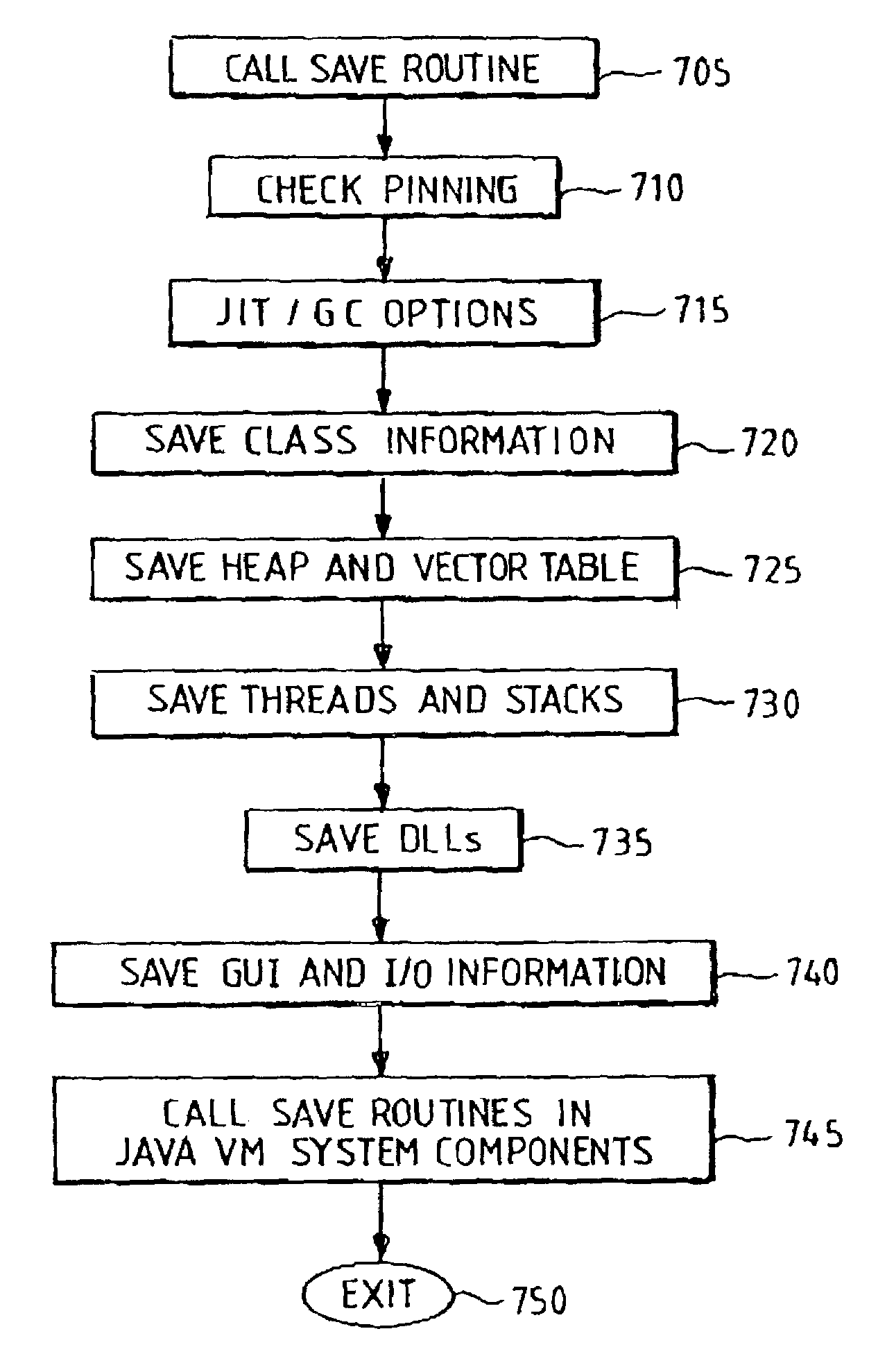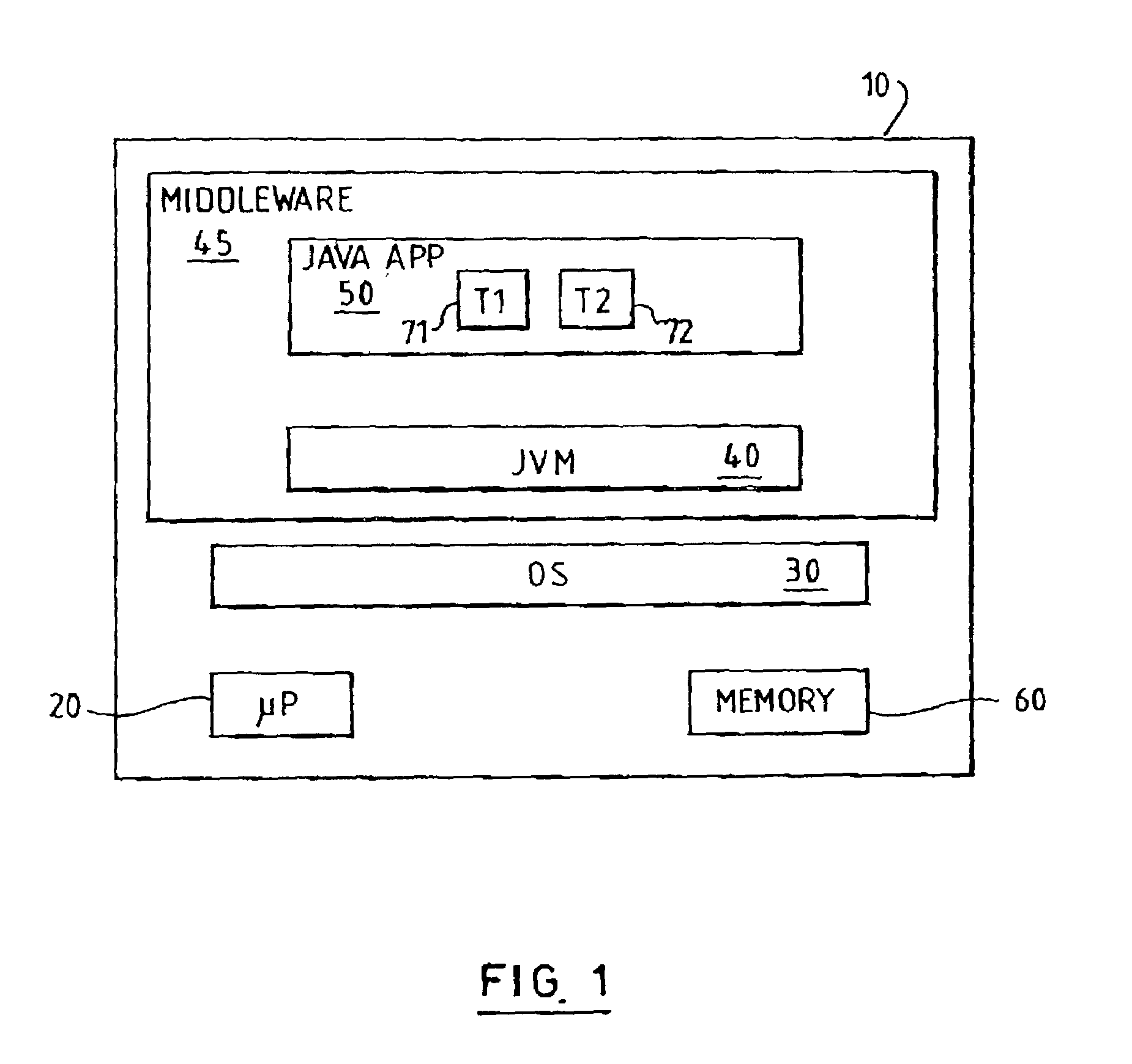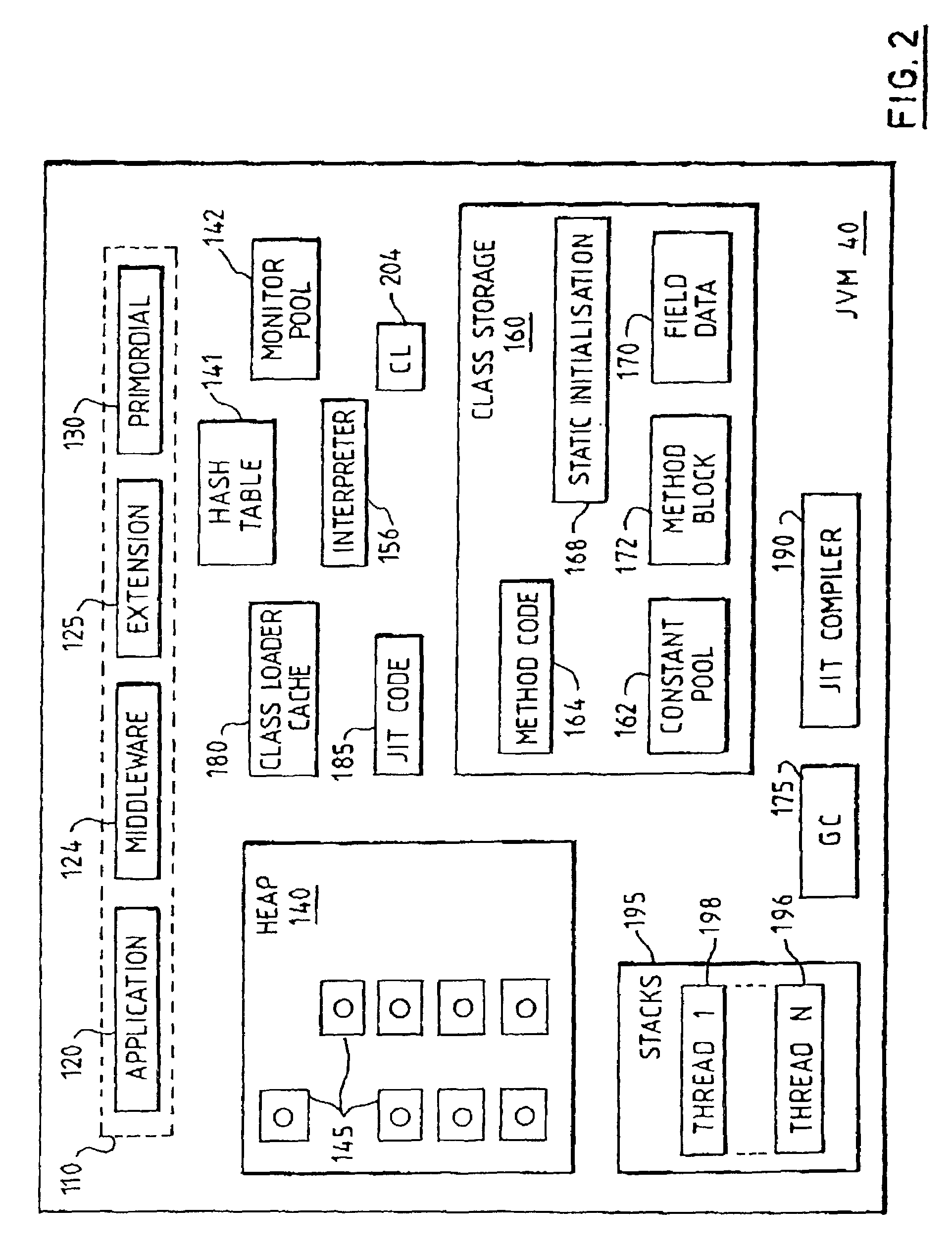Method and apparatus for suspending a software virtual machine
a software virtual machine and suspending technology, applied in the direction of program control, multi-programming arrangements, instruments, etc., can solve the problems of reducing the scalability affecting the stability of java vms, and affecting the stability of java server solutions, so as to reduce the restore time and facilitate the start-up process. , the effect of reducing the time of the restor
- Summary
- Abstract
- Description
- Claims
- Application Information
AI Technical Summary
Benefits of technology
Problems solved by technology
Method used
Image
Examples
example save
Interface
[0120]The following interface gives an indication of the callable methods available to the application writer to save the state of an application using the approach described above:
[0121]
Class;SerialiseJVMMethods;CheckPinning () / / this identifiesany pinnedobjects and will exit if any arefound / / forceJIT(options) / / this ensures that allcodecompilation is performed beforerestore / / ForceFinalizer(options) / / this runs theFinalizer methodofappropriate objects allowingthem to be deleted (garbagecollected), so that they don'tneed to be savedunnecessarily / / heapSize(int size) / / this determinesheap size / / stackSizes(int C-size, int J-size) / / this determinesstack size / / snapshot(string filename) / / this takes thesnapshot / /
[0122]Note that some or all of these methods may in fact be included (possibly as options) in the main snapshot method; the extent to which the methods are separated is largely a question of user convenience.
[0123]FIG. 7 is a flowchart summarising the above save oper...
PUM
 Login to View More
Login to View More Abstract
Description
Claims
Application Information
 Login to View More
Login to View More - R&D
- Intellectual Property
- Life Sciences
- Materials
- Tech Scout
- Unparalleled Data Quality
- Higher Quality Content
- 60% Fewer Hallucinations
Browse by: Latest US Patents, China's latest patents, Technical Efficacy Thesaurus, Application Domain, Technology Topic, Popular Technical Reports.
© 2025 PatSnap. All rights reserved.Legal|Privacy policy|Modern Slavery Act Transparency Statement|Sitemap|About US| Contact US: help@patsnap.com



